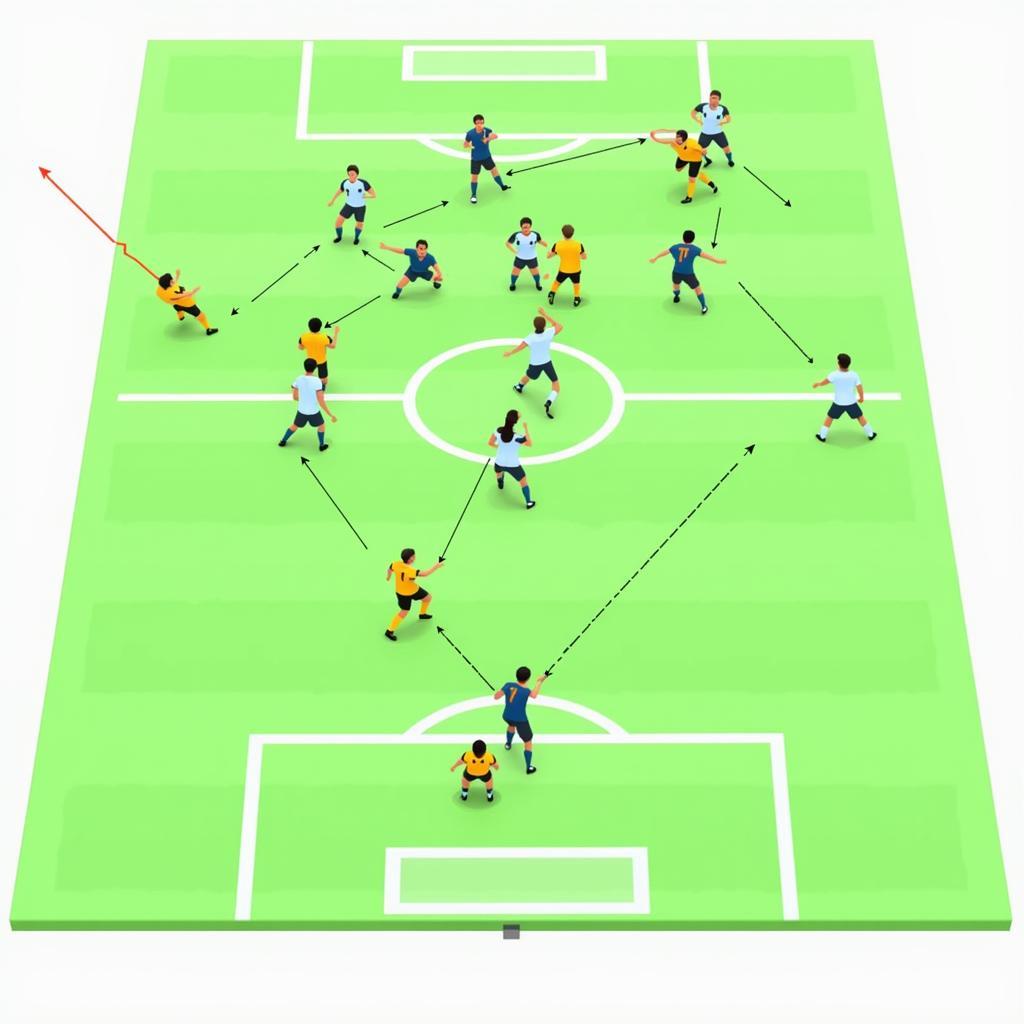Mastering the 4-3-3 Formation: A Tactical Deep Dive
October 26, 2024The 4-3-3 formation is a dynamic and versatile system that has gained immense popularity in modern football. From youth leagues to the highest echelons of the professional game, the 4-3-3 offers a balanced approach to both attack and defense, providing coaches with a fluid framework to adapt to various opponents and game situations.
Understanding the Basics of the 4-3-3
At its core, the 4-3-3 formation features four defenders, three midfielders, and three forwards. The defensive line typically consists of two center-backs and two full-backs, providing solidity and width at the back. The midfield trio is crucial for controlling the tempo of the game, with a defensive midfielder offering protection to the defense and two more advanced midfielders linking play with the attack. Upfront, the three forwards offer pace, creativity, and goalscoring prowess.
This formation’s strength lies in its adaptability and balance. It allows teams to transition quickly between offense and defense, maintain a compact shape, and create numerical superiority in key areas of the pitch.
Advantages of the 4-3-3 Formation
Offensive Prowess: The 4-3-3 offers numerous attacking options. The three forwards can stretch the opposition’s defense, creating space for midfield runners. The wide forwards can isolate defenders in one-on-one situations, while the central striker acts as a focal point for crosses and through balls.
Midfield Control: The midfield trio is crucial for dictating the rhythm of the game. A well-drilled midfield can control possession, create scoring opportunities, and shield the defense effectively.
Defensive Stability: While known for its attacking flair, the 4-3-3 also provides defensive solidity. The back four provides a strong base, while the midfielders track back to support the defense and close down spaces.
 Soccer field diagram showing attacking movements in a 4-3-3 formation
Soccer field diagram showing attacking movements in a 4-3-3 formation
Variations of the 4-3-3 Formation
The beauty of the 4-3-3 lies in its adaptability. Coaches can tweak the formation to suit their team’s strengths and exploit opponents’ weaknesses.
4-3-3 Holding: This variation emphasizes defensive solidity. The midfield features a dedicated holding midfielder who sits in front of the defense, providing extra protection and breaking up opposition attacks.
4-3-3 Attacking: This variation focuses on offensive firepower. The midfielders are more attack-minded, pushing higher up the pitch to support the forwards and create scoring chances.
False 9: In this variation, the central striker drops deep into midfield, dragging defenders out of position and creating space for onrushing midfielders and wingers.
Key Player Roles in the 4-3-3
Center-Backs: Must be strong in the air, good tacklers, and comfortable playing out from the back.
Full-Backs: Need to be both defensively sound and capable of contributing to the attack with overlapping runs and crosses.
Defensive Midfielder: Must be a disciplined ball-winner with excellent positional awareness and passing ability.
Central Midfielders: Need to be versatile players with a good range of passing, vision, and the ability to both score and create goals.
Wingers: Must be quick, skillful dribblers who can take on defenders, deliver accurate crosses, and score goals.
Striker: Needs to be a clinical finisher with good movement, link-up play, and the ability to hold up the ball.
Conclusion
The 4-3-3 formation is a versatile and effective system that offers a balanced approach to the game. Its adaptability, attacking potency, and defensive stability have made it a popular choice for coaches at all levels of football. With the right players and tactical understanding, the 4-3-3 can be a formidable formation for any team.
FAQs
1. What are the key differences between the 4-3-3 and the 4-4-2 formation?
The main difference lies in the midfield and attack. The 4-3-3 has one less striker but an extra midfielder, giving it more control in midfield but potentially less firepower upfront.
2. How important is the holding midfielder in the 4-3-3 formation?
The holding midfielder is crucial for defensive solidity, breaking up opposition attacks and providing cover for the center-backs.
3. Can the 4-3-3 formation be used by teams with different playing styles?
Yes, the 4-3-3 is adaptable and can be tweaked to suit different styles, from possession-based football to a more direct, counter-attacking approach.
4. What are some of the challenges of playing the 4-3-3 formation?
One challenge is that if the wingers don’t track back, the full-backs can be exposed defensively. Another is that the central striker can become isolated if the midfielders don’t provide adequate support.
5. Which teams are known for their successful use of the 4-3-3 formation?
Barcelona under Pep Guardiola, Liverpool under Jürgen Klopp, and Bayern Munich under Hansi Flick are prime examples of teams that have achieved great success using the 4-3-3.
Need More Information?
Have questions about Yamal or other tactical analysis? We’re here to help! Contact us:
Phone: 0915117113
Email: [email protected]
Address: Tổ 3 Kp Bình An, Phú Thương, Việt Nam, Bình Phước 830000, Việt Nam
Our team is available 24/7 to assist you.